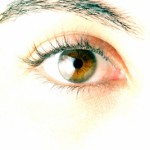Dry eyes can be a dangerous disease
Everybody knows that great eyes can be a blessing. They are the main feature of the human face and amongst one of the most important body parts so, a person should take good care of his or her eyes. Eyes may suffer from many diseases and dry eyes are one of them.
The causes of dry eyes:
Dry eyes are caused when the tears produced by your eyes are not able to provide sufficient moisture content. This can be caused due to many reasons; either your eyes are not producing enough tears to provide adequate moisture and lubrication or they are not producing tears of good quality to stay healthy and comfortable.
Dry eyes can also be caused if tears get evaporated to soon from the film of a person’s eyes. Tear film consists of three different layers. The outer most layer is the oil layer and its purpose is smoothing of the tears surface, but its most important role is that it reduces the rate of evaporation of tears from the surface of the tear film. The next layer is watery layer. This is the layer which actually produces tears, which are used to clean the eye and wash away any foreign and irritating particles. Then comes the innermost layer which is called mucus. Mucus helps the watery layer to spread over evenly, and helps the eye in remaining moist.
What makes you a target of dry eyes?
Dry eyes are most common in people above 60 years of age. If a person is suffering with dry eyes, his or eyes will not feel comfortable. The other symptoms of dry eyes are that, the person will feel persistent dryness and scratchiness and can also feel a burning sensation in the eyes.
Dry eyes can also occur in certain situations, such as when you are on an airplane, when you are in an air-conditioned room, while riding a bike or you can also feel dry eyes after looking at a computer screen for many hours.
When you visit the doctor, the doctor will try to measure the amount of tears that your eye is producing. After measuring the amount of tears that your body is producing, the doctor will prescribe you an artificial tear solution. These solutions can easily be bought from medical store and dry eyes will be cured and thus will prevent your vision from being affected.
In case you think you are suffering from dry eyes, you should consult some qualified specialists like, Cornea Consultants of Arizona.







